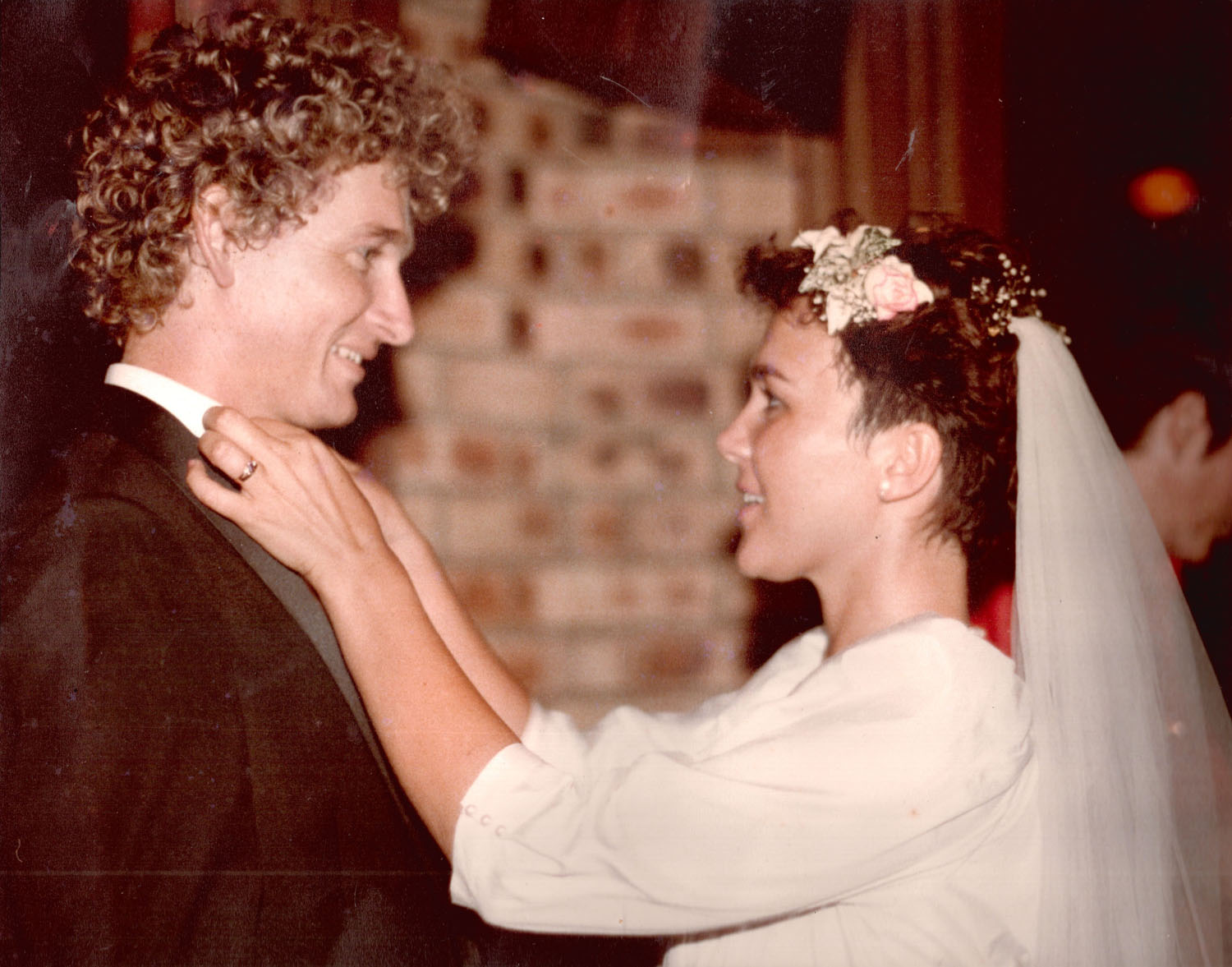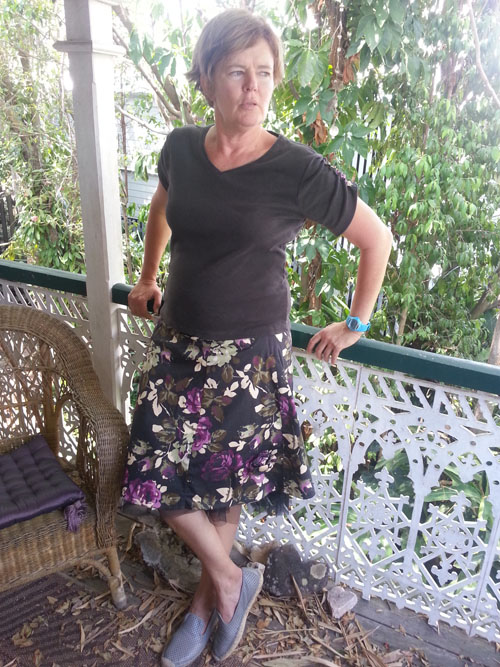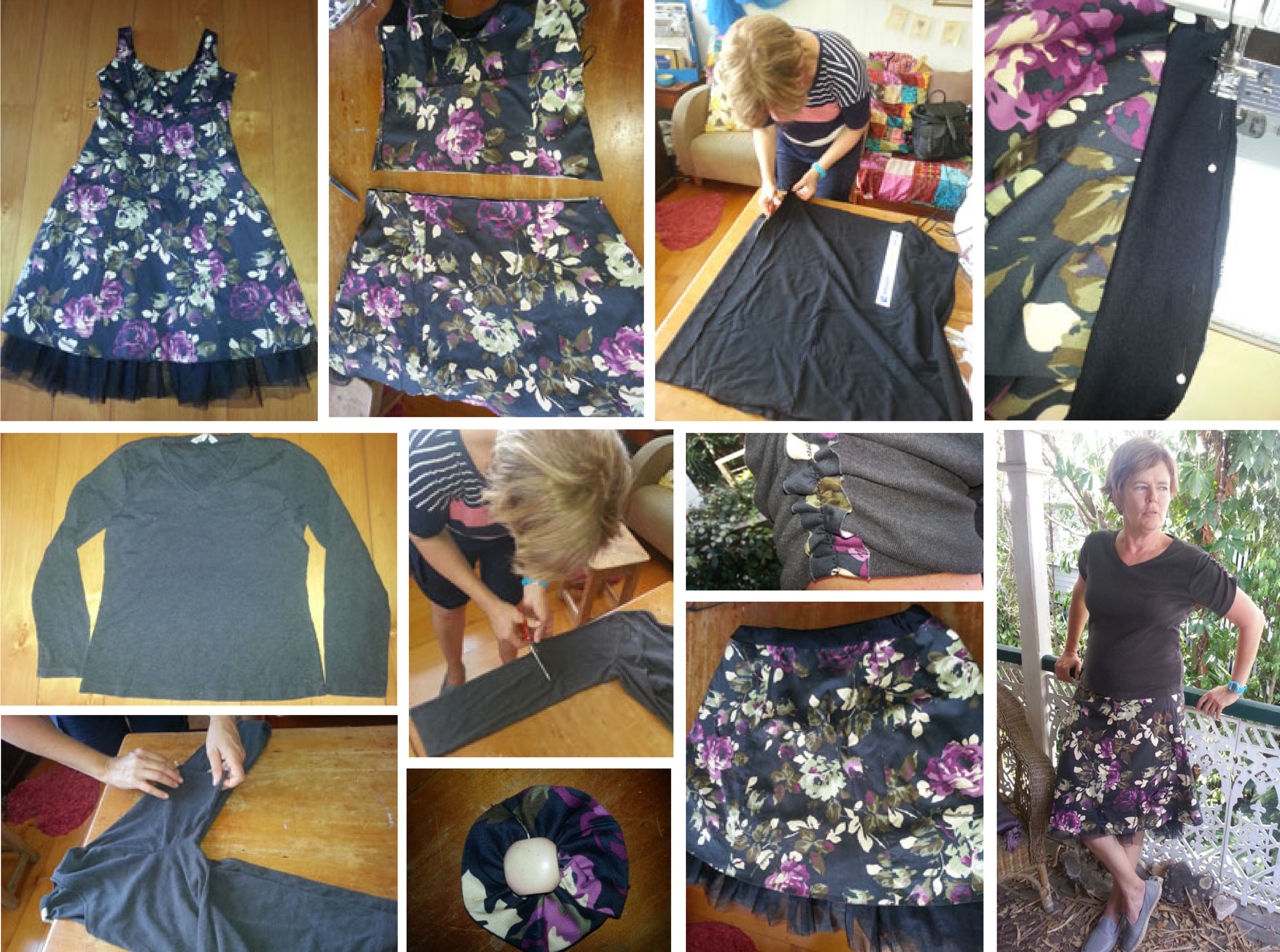Nearly a year ago, I wrote this career-change summary: Jane Milburn is an agricultural scientist by training and an issues-based communications consultant by practice. Sew it Again is a journey into creativity, empowerment, thrift, sustainability, ecological unhealth and wellbeing – woven with threads of childhood, professional expertise, networks and nature. During 2014, Jane is making a daily practice of upcycling garments from her own and others’ wardrobes as a way of sharing a creative way of dressing.
The decision to sew a fresh seam in life coincided with three children making their own way in the world (sad but good too, freeing up space and time) doing postgraduate study (Grad Cert Australian Rural Leadership) and the loss of my youngest brother Paul in an accident (a reality check about the finite nature of life).
 So here I am, sewing every day – on one hand as a protest against the fast-fashion churnover of clothing that is leading to waste and exploitation of natural resources and people – and on the other hand demonstrating a creative way to bring home-sewing into the 21st century. This Sew it Again year is only possible thanks to my lifetime partner, chief backer and supporter Mr Darcy, my husband. (See our wedding photo right).
So here I am, sewing every day – on one hand as a protest against the fast-fashion churnover of clothing that is leading to waste and exploitation of natural resources and people – and on the other hand demonstrating a creative way to bring home-sewing into the 21st century. This Sew it Again year is only possible thanks to my lifetime partner, chief backer and supporter Mr Darcy, my husband. (See our wedding photo right).
As this sewing year has progressed, I’ve researched and read what has been written internationally about fashion and clothing consumption – and have previously quoted lead voices in the field such as Lucy Siegle, Elizabeth Cline, Sass Brown and Professor Kate Fletcher.
Another voice to add to the list is Livia Firth, who recently wrote an article for Huffington Post about Why fashion should be on the climate change agenda. Ms Firth wrote: “Today, approximately 80 billion garments are produced new every year. Imagine all the resources that this requires. To make our clothes we need water (between 11,000 and 20,000 litres of water are needed to produce enough textile for one pair of jeans). From oil for synthetic fibres, to energy for textile production and dye for colour – we are dependent on multifarious resources at a time when these resources are being degraded at unprecedented speed.”
This goes to the heart of the matter – excessive consumption and waste – as I wrote on the blog earlier this week. Ms Firth has been influencing the top end of fashion for a few years now, working with eco-designers and establishing the Green Carpet Challenge – and having her own Mr Darcy (aka Colin Firth) to profile upcycled fashion at the Oscars.
 Meanwhile, I’m working at the every end of fashion. Today is Day 309 of 365 days of upcycling, and the featured refashion is one that a long-time friend of Darcy’s and mine – Christine – and I created to be suitable for her work as a secondary school science teacher who needs to dress neatly and conservatively every day. I found a cast-off dress and t-shirt in the stash which were no longer getting out and about as they were (see before photo below). We cut the top off the dress and added an elastic waistband to transform it into a comfortable skirt. With the grey T-shirt, we cut off the sleeves and sewed a strip of floral fabric off-cut to transform them into a more interesting shape. Just for fun, we made a rosette with vintage button to pin to the skirt as embellishment.
Meanwhile, I’m working at the every end of fashion. Today is Day 309 of 365 days of upcycling, and the featured refashion is one that a long-time friend of Darcy’s and mine – Christine – and I created to be suitable for her work as a secondary school science teacher who needs to dress neatly and conservatively every day. I found a cast-off dress and t-shirt in the stash which were no longer getting out and about as they were (see before photo below). We cut the top off the dress and added an elastic waistband to transform it into a comfortable skirt. With the grey T-shirt, we cut off the sleeves and sewed a strip of floral fabric off-cut to transform them into a more interesting shape. Just for fun, we made a rosette with vintage button to pin to the skirt as embellishment.
This is another example of how we can use simple sewing skills to refashion existing unworn clothing for a second life, rather than always buying new.
